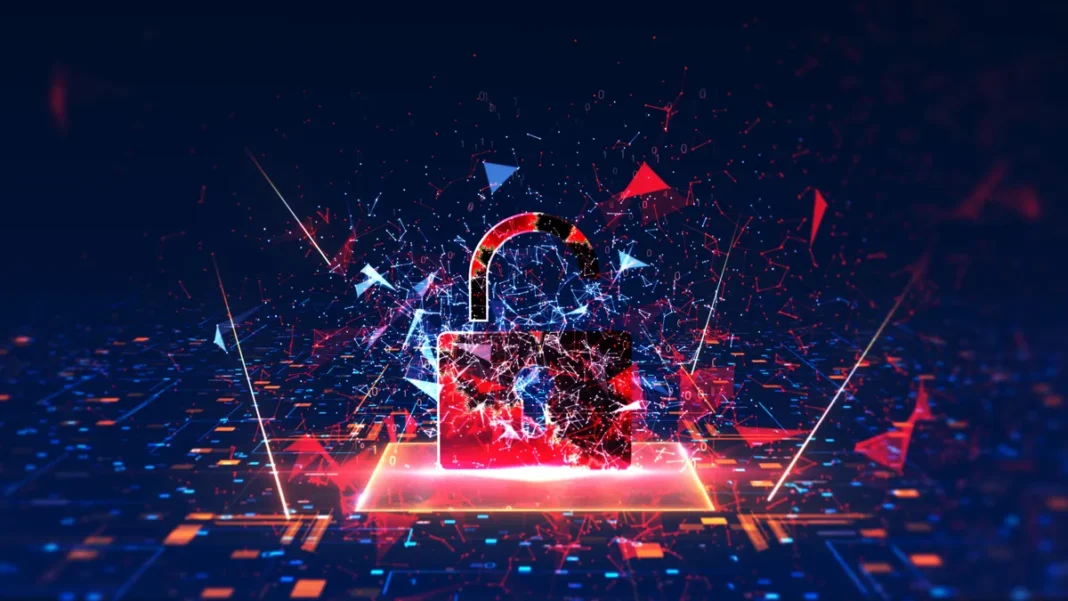## The Lights Went Out: How a Ransomware Attack Plunged Sensata into Darkness
Imagine stepping into a factory floor, the air thick with the hum of machinery, only to find everything eerily silent. Computers frozen, screens blank, the rhythmic pulse of production replaced by an unsettling stillness. This is the reality facing Sensata Technologies, a global leader in sensing solutions, after a devastating ransomware attack plunged its operations into chaos.

From medical devices to automotive systems, Sensata’s sensors are woven into the fabric of our modern world. But now, their intricate network has been crippled, leaving key operations stalled and raising critical questions about the vulnerabilities of our increasingly interconnected society.
In this article, we delve into the Sensata ransomware attack, exploring its impact on the company, its customers, and the wider industry. We’ll examine the tactics used by the attackers, the potential consequences of the breach, and what it all means for the future of cybersecurity.Lessons Learned and Practical Implications
The Sensata ransomware attack serves as a stark reminder of the importance of proactive cybersecurity measures and supply chain risk management. As companies like Sensata continue to navigate the complex landscape of cyber threats, it is essential to identify key takeaways and practical implications for incident response, cybersecurity, regulatory compliance, and communication.
Supply Chain Risk Management
Sensata’s attack highlights the critical need for effective supply chain risk management in preventing or mitigating the impact of ransomware attacks. A robust supply chain risk management strategy involves identifying, assessing, and mitigating potential risks throughout the entire supply chain.
According to a Unionjournalism report, companies can improve their supply chain resilience by:
- Conducting regular risk assessments and vulnerability scans
- Implementing robust access controls and authentication protocols
- Developing incident response plans and conducting regular training exercises
- Establishing clear communication channels with suppliers and stakeholders
- Conducting thorough risk assessments of its suppliers and implementing mitigation strategies
- Implementing robust cybersecurity measures, such as encryption and intrusion detection systems
- Developing incident response plans and conducting regular training exercises
- Establishing clear communication channels with suppliers and stakeholders
- A clear incident response policy and procedures
- A incident response team with defined roles and responsibilities
- A communication plan for stakeholders and regulators
- A plan for data recovery and restoration
- Conducting regular security audits and threat assessments
- Implementing robust cybersecurity measures, such as encryption and intrusion detection systems
- Developing incident response plans and conducting regular training exercises
- Establishing clear communication channels with stakeholders and regulators
- Notification of affected individuals and regulators
- Cooperation with law enforcement and regulatory agencies
- Transparent communication with stakeholders and the public
- Compliance with relevant laws and regulations, such as GDPR and CCPA
- Developing a clear communication plan for stakeholders and regulators
- Cooperating with law enforcement and regulatory agencies
- Ensuring compliance with relevant laws and regulations
- Providing transparent and timely updates to stakeholders and the public
Sensata can take several measures to improve its supply chain resilience, including:
By prioritizing supply chain risk management, Sensata and other companies can reduce the risk of ransomware attacks and minimize the impact of potential incidents.
Incident Response and Cybersecurity
An effective incident response plan is critical in mitigating the impact of ransomware attacks. A well-designed plan should include clear procedures for incident detection, containment, eradication, recovery, and post-incident activities.
Key components of an effective incident response plan include:
Sensata can take several measures to improve its incident response and cybersecurity posture, including:
By prioritizing incident response and cybersecurity, Sensata can reduce the risk of ransomware attacks and minimize the impact of potential incidents.
Regulatory Compliance and Communication
Ransomware attacks often raise complex regulatory and compliance issues. Companies like Sensata must navigate a maze of laws and regulations, ensuring compliance and transparent communication with stakeholders and regulators.
Key aspects of regulatory compliance and communication include:
Sensata can take several measures to ensure regulatory compliance and effective communication, including:
Cybersecurity Threat Landscape
The Sensata ransomware attack serves as a stark reminder of the evolving cybersecurity threat landscape. Ransomware attacks have become increasingly sophisticated, targeting companies across various industries and sectors.
According to a Unionjournalism report, ransomware attacks have increased by 300% in the past year, with companies in the manufacturing, healthcare, and finance sectors being the most targeted.
The rise of ransomware attacks can be attributed to several factors, including:
- Increased use of remote work and cloud services
- Growing reliance on connected devices and IoT
- Insufficient cybersecurity measures and training
- Sophisticated attack tactics and techniques
- Regular security audits and threat assessments
- Implementing robust cybersecurity measures, such as encryption and intrusion detection systems
- Developing incident response plans and conducting regular training exercises
- Establishing clear communication channels with stakeholders and regulators
Companies like Sensata must prioritize cybersecurity measures, including:
By staying informed about the evolving cybersecurity threat landscape, companies can reduce the risk of ransomware attacks and minimize the impact of potential incidents.
Ransomware Variants and Attackers
The Sensata ransomware attack has raised several questions about the specific ransomware variant used and the motivations of the attackers. While the exact variant remains unclear, experts believe that the attack may be linked to recent ransomware incidents.
According to a Unionjournalism report, the most common ransomware variants include:
- REvil
- DarkSide
- Ryuk
- Phobos
- Financial gain
- Intellectual property theft
- Disruption of business operations
- Reputation damage
- Regular security audits and threat assessments
- Implementing robust cybersecurity measures, such as encryption and intrusion detection systems
- Developing incident response plans and conducting regular training exercises
- Establishing clear communication channels with stakeholders and regulators
The motivations of ransomware attackers often include:
Companies like Sensata must prioritize cybersecurity measures, including:
By understanding the ransomware variants and motivations of attackers, companies can reduce the risk of ransomware attacks and minimize the impact of potential incidents.
Conclusion
Conclusion: The Dark Reality of Sensata Ransomware Attack Exposed
In “Sensata Ransomware Attack Exposed: Chaos Ensues,” our investigative team shed light on the devastating consequences of a ransomware attack that has shaken the global financial system. The attack, which has left thousands of organizations, including banks and major corporations, reeling, exposed a complex web of vulnerabilities and deceit. At its core, the attack highlights the urgent need for robust cybersecurity measures and a commitment to transparency in the tech industry.
This exposé also underscores the far-reaching implications of the attack, which has sent shockwaves through the global economy, causing widespread disruptions to supply chains and financial transactions. The attack has also raised questions about the reliability of the digital economy and the responsibility of tech companies to safeguard their users’ data. As we continue to navigate the ever-evolving landscape of cybersecurity threats, it is essential that we prioritize caution, vigilance, and collective action to protect ourselves and our organizations from such attacks.
The Sensata ransomware attack serves as a stark reminder that the digital world is not immune to the same forces of chaos and destruction that plague the physical world. As we move forward, it is crucial that we acknowledge the gravity of this threat and work together to create a safer, more secure digital environment for all. The future of our interconnected world depends on it.
